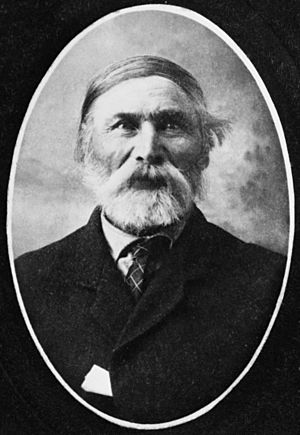James Isbister facts for kids
James Isbister (born November 29, 1833 – died October 16, 1915) was an important Métis leader in Canada during the 1800s. He was a key figure among the Anglo-Métis people in his area. Many people consider him the founder of the city of Prince Albert, Saskatchewan.
Contents
James Isbister's Life Story
Interpreter and Farmer
James Isbister worked for the Hudson's Bay Company for many years. He was very good with languages. He could speak English, Gaelic, Cree, Dene, and Michif. This made him a valuable interpreter.
In the summer of 1862, James Isbister started farming. He set up his farm about one mile east of where the federal penitentiary is today in Prince Albert. This area is now close to 17 Avenue and 14 Street West. James Isbister was likely the first person in what is now Saskatchewan to grow wheat on his own farm. He also taught farming skills on the John Smith Reserve, which is now the Muskoday First Nation.
By 1866, James Isbister moved a short distance away. Many families had already settled in the area. This growing community became known as Isbister's Settlement.
Community Leader and Challenges
By 1884, many settlers and Métis people were becoming unhappy. They faced tough farming conditions and problems with land ownership in the Saskatchewan Valley region. As a respected community leader, James Isbister was chosen as one of four delegates. These delegates, including Gabriel Dumont, traveled to Montana. Their mission was to ask Louis Riel to return and help lead the people. They wanted Riel to help them get the government to address their concerns.
Local settlers felt the government was not doing enough. This led to a major conflict called the North-West Rebellion in 1885.
Later Life and Legacy
When the tensions turned into violence, James Isbister, like most other Anglo-Métis in the area, chose not to join the movement led by Louis Riel. Despite this, some newspapers in Prince Albert criticized him.
After the North-West Rebellion, James Isbister remained active in the Anglican Church of Canada in the Prince Albert area. He spent his final years in that community. He is buried in the Anglican St. Mary's Cemetery. This cemetery is just west of the Penitentiary, not far from where he first started farming.
See also


